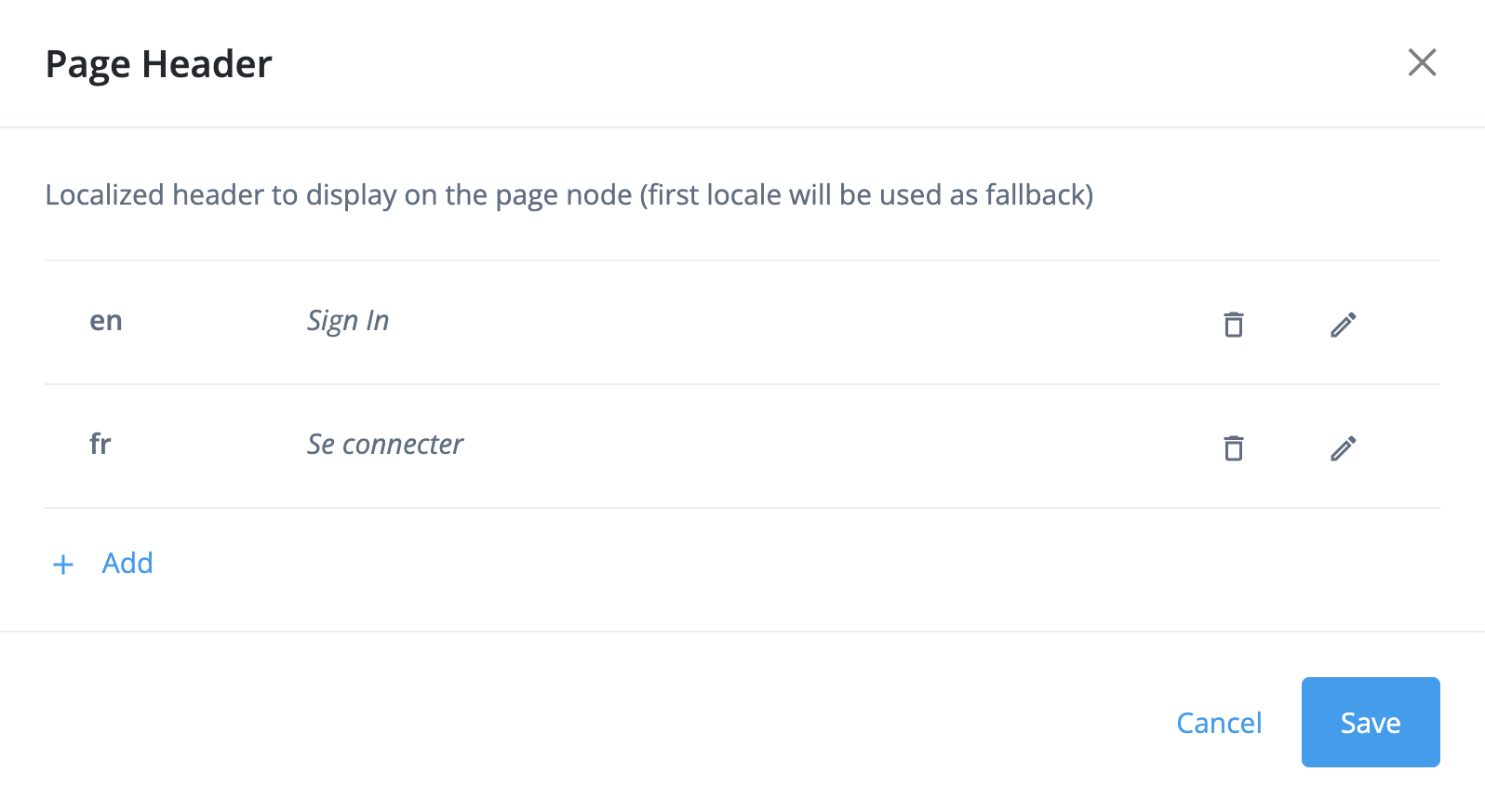Localize login and end-user pages
PingOne Advanced Identity Cloud lets you localize login and end-user pages to support the different languages of your
end users. Use ISO-639-1 language codes (for
example fr and de) to provide locale specific content in as many locales as you need.
Localize at feature level
Localize related features
You can localize the following features related to journey and account pages:
| Feature | Description |
|---|---|
Hosted pages |
Learn more in Localize headers and footers and Localize the favicon and theme logo. |
Security questions |
Learn more in Security questions. |
Terms and conditions |
Learn more in Terms and conditions. |
Email templates |
Learn more in Email templates. |
Localize journey authentication nodes
You can individually localize authentication nodes that display content in journey pages. For example, the Page node lets you add content to the Page Header property to display an initial journey message to end users. You can define as many localized versions of the message as you need:

Localize at UI level
You can localize static content and server messages in the login and end-user UIs using translation configuration. Learn more in Configure tenant localization.